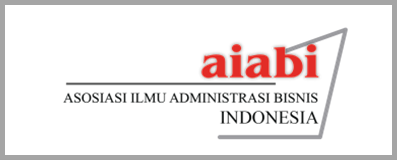The Role of Green Marketing Innovation In Establishing Sustainable Tourism Based on Green Customers In Kesiman Kertalangu Tourism Village, Denpasar
DOI:
https://doi.org/10.31334/bijak.v22i1.4549Keywords:
Green Marketing Innovation, Green Customer, Sustainable Tourism, Tourism Village,Abstract
The aim of this research was to analyze the direct effect of green marketing innovation and green customer on sustainable tourism, and to explore the mediating role of green customer on the effect of green marketing innovation on sustainable of tourism village in Kesiman Kertalangu, Denpasar, Bali. The population of this research was the tourists who visited Kesiman Kertalangu. There were 180 tourists being the respondents of this research. The data was analyzed using SEM-PLS. This study revealed that Green marketing innovation and green customer had positive and significant effects on sustainable tourism. Furthermore, Green customer significantly mediated the effects of green marketing innovation on sustainable tourism. Green marketing helps to create awareness and educate tourists about environmentally friendly tourism, while green customers drive demand and put pressure on the industry to adapt to sustainable practices. Collaboration between the two can create a more environmentally friendly tourism ecosystem and support the preservation of nature and culture in the future.References
Amir, A. F., Ghapar, A. A., Jamal, S. A., & Najiah, K. (2015). Asia Pacific International Conference on Environment-Behaviour Studies Sustainable tourism development : A study on community resilience for rural tourism in Malaysia. Procedia - Social and Behavioral Sciences, 168, 116–122. https://doi.org/10.1016/j.sbspro.2014.10.217
Baktash, L., & Talib, M. A. (2019). Green marketing strategies: Exploring intrinsic and extrinsic factors towards green customers’ loyalty. Quality - Access to Success, 20(168), 127–134.
Chang, N. J., & Fong, C. M. (2010). Green product quality, green corporate image, green customer satisfaction, and green customer loyalty. African Journal of Business Management, 4(13), 2836–2844. http://www.academicjournals.org/AJBM
Font, X., & Tribe, J. (2001). Promoting green tourism: the future of environmental awards. International Journal of Tourism Research, 3(1), 9–21. https://doi.org/10.1002/1522-1970(200101/02)3:1<9::aid-jtr244>3.0.co;2-q
Furqan, A., Mat Som, A. P., & Hussin, R. (2016). PROMOTING GREEN TOURISM FOR FUTURE SUSTAINABILITY. JSTOR, 4(1), 1–23.
Hair, J. F., Ringle, C. M., & Sarstedt, M. (2011). PLS-SEM: Indeed a Silver Bullet. Journal of Marketing Theory and Practice, 19(2), 139–152. https://doi.org/10.2753/MTP1069-6679190202
Harris, R., Griffin, T., & Williams, P. (2002). Sustainable Tourism: A Global Perspective.
Hawkins, D. (2004). Sustainable tourism competitiveness clusters: application to World Heritage sites network development in Indonesia. https://doi.org/10.1080/1094166042000290682
Hjalager, A. (2010). A review of innovation research in tourism. Tourism Management, 31(1), 1–12. https://doi.org/10.1016/j.tourman.2009.08.012
Ibnou-Laaroussi, S., Rjoub, H., & Wong, W. K. (2020). Sustainability of green tourism among international tourists and its influence on the achievement of green environment: Evidence from North Cyprus. Sustainability (Switzerland), 12(14), 1–24. https://doi.org/10.3390/su12145698
Meler, M., & Ham, M. (2012). Green Marketing for Green Tourism. Tourism & Hospitality Management 2012, 130–139.
Singsomboon, T. (2014). TOURISM PROMOTION AND THE USE OF LOCAL WISDOM THROUGH CREATIVE TOURISM PROCESS. IJBTS International Journal of Business Tourism and Applied Sciences, 2(2), 32–37.
Soesanta, P. E., Putra, I. R. A. S., & Hutagalung, O. H. (2023). The Development of a Sustainable Tourism Area for Borobudur Temple as a City Branding Theme for Magelang Regency. Jurnal Bina Praja, 15(1), 111–122. https://doi.org/10.21787/jbp.15.2023.111-122
Spenceley, A., Snyman, S., & Eagles, P. F. J. (2019). A decision framework on the choice of management models for park and protected area tourism services. Journal of Outdoor Recreation and Tourism, 26(March), 72–80. https://doi.org/10.1016/j.jort.2019.03.004
Yusof, Y., Awang, Z., Jusoff, K., & Ibrahim, Y. (2017). The influence of green practices by non-green hotels on customer satisfaction and loyalty in hotel and tourism industry. International Journal of Green Economics, 11(1), 1–14. https://doi.org/10.1504/IJGE.2017.082716
Downloads
Published
Issue
Section
License

This work is licensed under a Creative Commons Attribution-ShareAlike 4.0 International License
Please find the rights and licenses in Majalah Ilmiah Bijak By submitting the article/manuscript of the article, the author(s) agree with this policy. No specific document sign-off is required.
- License
The commercial use of the article will be governed by the Creative Commons Attribution license as currently displayed on Creative Commons Attribution-ShareAlike 4.0 International License.
2. Author(s)' Warranties
The author warrants that the article is original, written by stated author(s), has not been published before, contains no unlawful statements, does not infringe the rights of others, is subject to copyright that is vested exclusively in the author and free of any third party rights, and that any necessary written permissions to quote from other sources have been obtained by the author(s).
3. User Rights
Majalah Ilmiah Bijak spirit is to disseminate articles published are as free as possible. Under the Creative Commons license, Majalah Ilmiah Bijak permits users to copy, distribute, display, and perform the work for non-commercial purposes only. Users will also need to attribute authors and Majalah Ilmiah Bijak on distributing works in the journal and other media of publications.
4. Co-Authorship
If the article was jointly prepared by more than one author, any authors submitting the manuscript warrants that he/she has been authorized by all co-authors to be agreed on this copyright and license notice (agreement) on their behalf, and agrees to inform his/her co-authors of the terms of this policy. Jurnal Bijak will not be held liable for anything that may arise due to the author(s) internal dispute. Majalah Ilmiah Bijak will only communicate with the corresponding author.
5. Miscellaneous
Majalah Ilmiah Bijak will publish the article (or have it published) in the journal if the article’s editorial process is successfully completed. Jurnal Bijak editors may modify the article to a style of punctuation, spelling, capitalization, referencing and usage that deems appropriate. The author acknowledges that the article may be published so that it will be publicly accessible and such access will be free of charge for the readers as mentioned in point 3.
Every accepted manuscript should be accompanied by "Copyright Transfer Agreement"prior to the article publication.





1.png)




